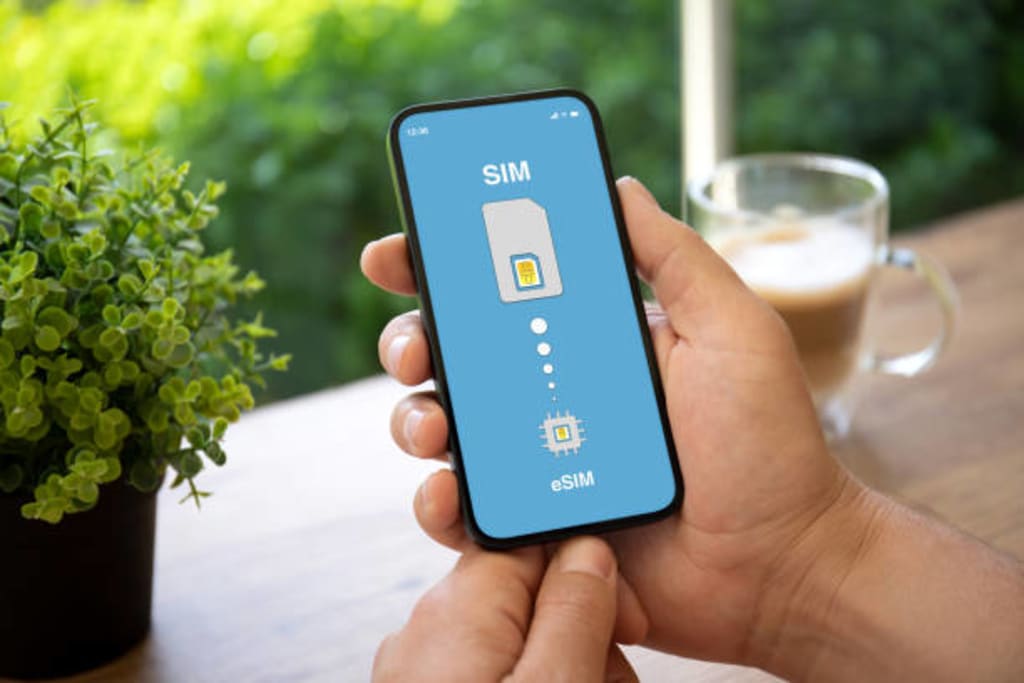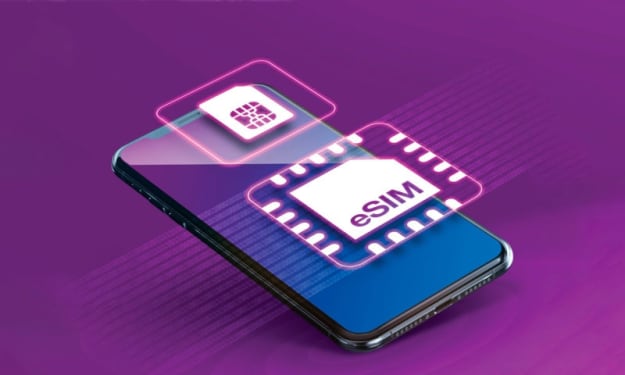Esimcard Provides Cheap and Real Data Plans in the United States
Esimcard

Overview of Esim
Esim is an open source distributed simulation engine for real-time microservices. It is designed to simulate a distributed system of microservices and measure the performance and scalability of these services. Esim allows users to model and simulate various distributed systems such as distributed databases, message queues, and web services. It provides metrics such as latency, throughput, and scalability, as well as visualization of system behavior. With Esim, users can easily experiment and optimize their distributed systems.
Advantages of Esim
Hassle-free roaming: Esim eliminates the need to change physical SIM cards when traveling abroad. This allows users to stay connected to the same number while roaming in different countries without having to buy a new SIM card.
Cost savings: Esim reduces costs for users by eliminating the need to purchase physical SIM cards. Since Esim's plans are subscription-based, users can save money by only paying for the data they use.
Flexibility: Esim allows users to easily switch between carriers and plans. Users can thus flexibly switch to a different plan every month that better suits their needs.
Enhanced Security: Because Esim is digital and stored on a secure server, it is less vulnerable to theft and other security risks associated with physical SIM cards. Users can also easily manage their account remotely as all their information is stored in the cloud.
Greater convenience: With Esim, users can access their accounts and purchase data plans online. This eliminates the need to visit a store to buy a physical SIM card or manage an account.
How to activate Esim
Esim activation works differently depending on your device and carrier. However, the general steps for eSIM activation are as follows:
To get an eSIM activation code, contact your carrier.
Download your operator's eSIM profile on your device.
Install the eSIM profile on the device.
Activate your eSIM profile using the activation code provided by your operator.
Once activated, you can use eSIM to make and receive calls, text messages, and access the Internet.
How to manage Esim
Understand the basics: Before you start managing your eSIM, it's important to understand what an eSIM is and how it works. An eSIM is an embedded SIM card inside a device such as a smartphone that allows connection to a mobile network.
Choose your carrier: Once you understand the basics of eSIM, you'll need to choose your carrier. You can choose from either a traditional wireless carrier or and esim provider. Each has its advantages and disadvantages.
eSIM activation: To connect to the mobile network, you will need to activate the eSIM on your device. Depending on your device or carrier, you may be able to do this through the app or by entering a code.
Data Usage Management: It is important to monitor your data usage with eSIM. Many operators have data plans that allow you to buy additional data as needed. It is important to manage your data usage to avoid data exhaustion and additional charges.
Troubleshooting: If you experience any problems with your eSIM, it is important to troubleshoot them. This can be done by contacting your carrier or using troubleshooting tools on your device.
Update your eSIM: Finally, it is important to update your eSIM regularly. This can be done through the app or by entering a code. This ensures that your device is always up to date and able to connect to the latest networks.
Easy to use for Esim
Esim is designed to be very user friendly and easy to use. It allows users to easily activate and manage their mobile service without having to physically replace the SIM card. The user just needs to download and install the respective application on their device and follow the instructions provided. The process is designed to be very straightforward and simple, with users able to manage their services with just a few clicks. Esim also allows users to easily switch operators, allowing them to enjoy different plans and services from different providers.
Security aspects for Esim
Use strong passwords and two-factor authentication. Using strong passwords and two-factor authentication (2FA) is the best way to protect eSIM cards from unauthorized access. Make sure all users have secure passwords and enable two-factor authentication for all accounts.
Enable encryption. Encryption is one of the most effective ways to secure data stored on an eSIM. Make sure all data is encrypted and encryption keys are stored securely on the device.
Implement access control. Access control is important to ensure that only authorized users have access to Regional eSIM. Implement access control measures such as authentication, authorization and access control lists to limit access to eSIMs.
Monitor eSIM activity. Monitor eSIM activity regularly to ensure it is secure and free of unauthorized activity. Track all access attempts, profile changes and other activity on eSIM.
Keep your eSIM updated. Make sure all eSIMs are updated with the latest security patches and updates. Check regularly for any security vulnerabilities or bugs and apply the necessary patches as soon as they become available.
Secure physical access to eSIM. Physical access to the eSIM should be as secure as possible. Use measures such as locks, cards or biometrics to ensure that only authorized people have access.
Be aware of potential threats. Be aware of potential threats and keep up to date with security news. Regularly check for malware and other threats to ensure that eSIMs are not compromised.
Conclusion
ESIM is an advanced technology that is becoming increasingly popular in the mobile technology industry. It offers users a secure and convenient way to access data and services on their mobile devices. This eliminates the need for physical SIM cards and allows users to change providers and devices without having to change SIM cards. It also provides enhanced security and privacy features, giving users more control over the data they share with mobile operators.
About the Creator
Enjoyed the story? Support the Creator.
Subscribe for free to receive all their stories in your feed. You could also pledge your support or give them a one-off tip, letting them know you appreciate their work.





Comments
There are no comments for this story
Be the first to respond and start the conversation.